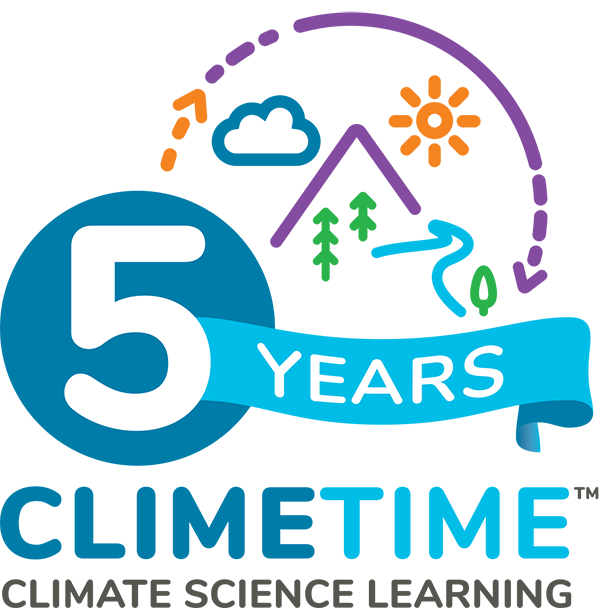ClimeTime, a statewide program that provides professional development learning to educators, is celebrating its fifth-year anniversary.
Since 2018, this grant-funded program has given teachers the opportunity to deepen their understanding of climate science. ClimeTime provides teachers a way to bring those lessons into the classroom in ways that address the issues their own, diverse communities face. The partnerships established between educational agencies, community-based organizations, and tribal schools throughout Washington bring together a unique collaboration that provides innovative approaches to climate education.
In its first five years, ClimeTime has reached approximately 26,000 educators, spanning 1,847 schools in over 200 school districts. This has impacted over 177,200 students!
“This is the only experience I’ve had in school where we talk about actively proposing solutions to the climate crisis and I think that’s important to do on a larger scale,” said one student who participated in a project inspired by ClimeTime.
One of the reasons ClimeTime stands out from other climate education systems is because it provides teachers with the means to move learning from the classroom to the community. The program empowers students to move the needle on climate change by addressing the issues impacting their own futures. Additionally, ClimeTime has supported teacher learning around Next Generation Science Standards (NGSS), which increases their access to high quality science instructional materials, like OpenSciEd.
Washington state students are not the only ones feeling this positive effect. ClimeTime has gained national recognition by sources like The New York Times while remaining locally relevant. Other states have taken notice and are looking to ClimeTIme to provide a model of climate education for organizations across the country.
“Through these professional development opportunities, we are helping educators grapple with some of the complex data to deepen their personal understanding of climate change and help them think about how to bring these learning activities into their classrooms for their students,” said Stacy Meyer, the ESD 112 Regional Science Coordinator and ClimeTime Lead.
The result? Abstract science becomes meaningful for both teachers and their students, allowing students to connect their learning to climate issues within their own communities and develop plausible solutions.
Funding for this grant started at $4 million and has since grown to $5 million for its fifth year.
Over the next five years, their goal is to weave climate education through all disciplines, not just science. By combining climate education with other areas, students can deepen their understanding of the intricate part science plays in all facets of life, and how, no matter what studies they pursue, climate change can impact their futures.




